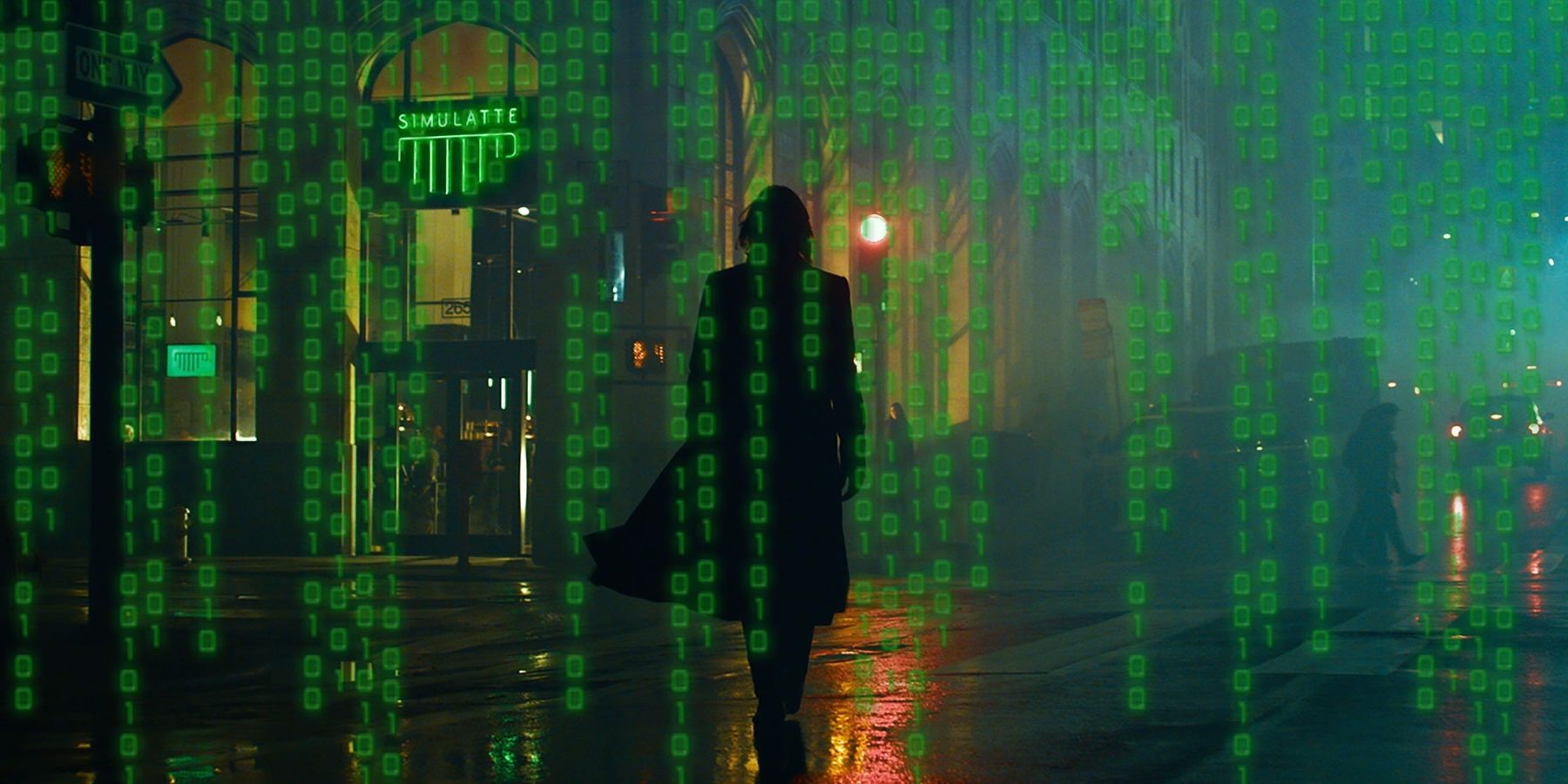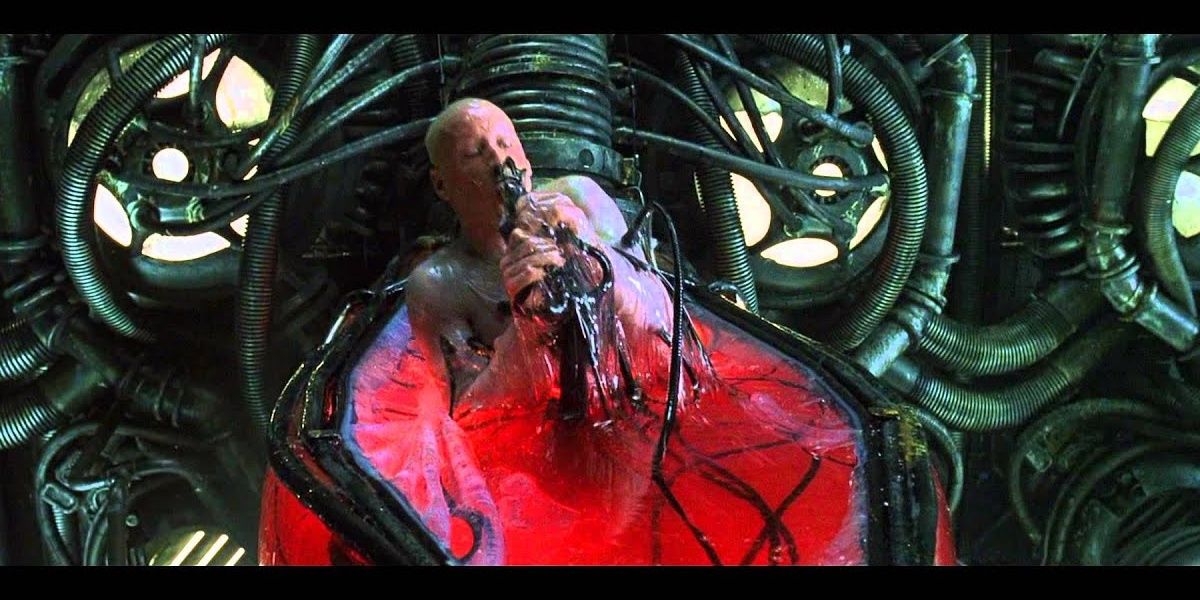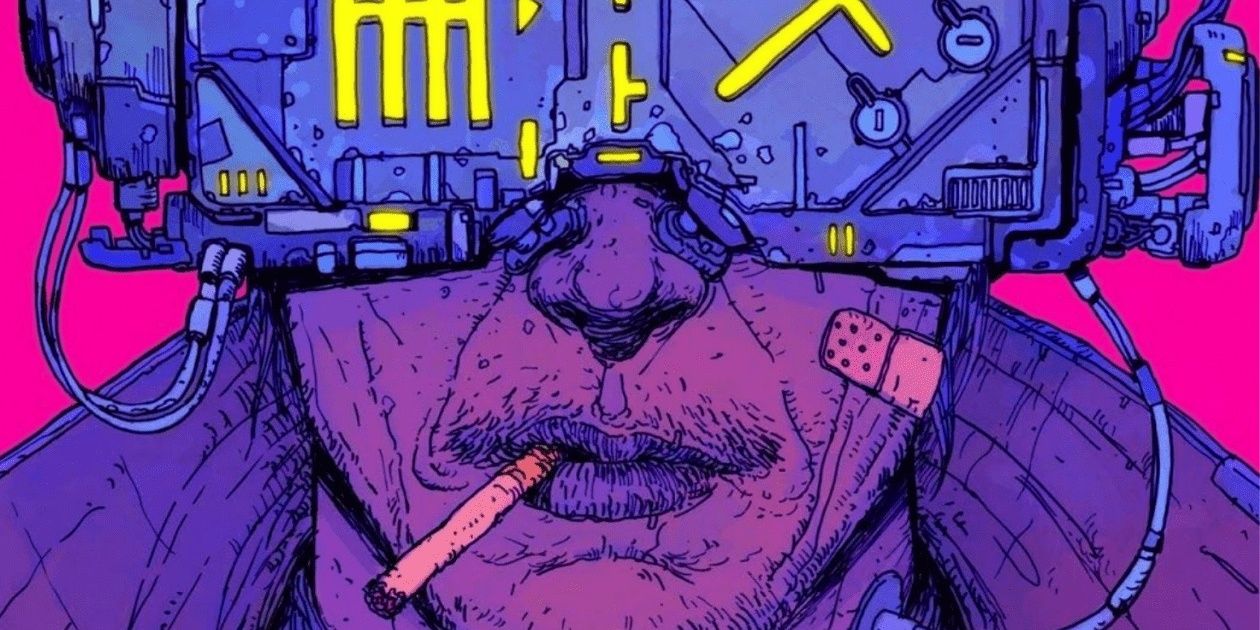Science fiction is the art of imagining what the distant future or the far reaches of space might be like if mankind ever survives to see those times and places. One uniquely common trope of the genre, however, does the opposite by suggesting that the banal everyday appearance one can expect on Earth is only a technological illusion.
When Neo woke up for the first time in the Wachowskis' groundbreaking 1999 sci-fi classic The Matrix, it was one of the best twists in modern film. That landmark moment in the history of science fiction is built on a mountain of previous material, and has informed everything that has come after it.
The easiest way to sum up the life simulation trope for most audiences today is to point at the premise of The Matrix and leave it at that. The trope suggests that someone or something has created a virtual reality that perfectly mimics the experience of real life. This could be marketed as a consumer product, granting the ability to enjoy reality from the safety of one's home. It could be a video game like The Sims, but much more advanced, which offers far too lifelike experiences through the power of some new hardware. But more often than not, it's a technological panoptic super-prison that traps its theoretically infinite victims in a fake reality that they don't know they're in.
The original philosophical grounding of simulated life comes from Ancient Greece. Plato's Allegory of the cave, first published as part of his early 6th-century work Republic, is the big idea behind concepts like The Matrix. The cave is a narrative thought experiment that describes a group of people chained to a wall for their entire life. The only things they can perceive are shadows played out on their featureless wall, so that becomes their reality. While not a representation of real life, the shadows are all the prisoners know, so it is their version of experiential life. The moral of the story is that reality is perceptual and that conditions can force a person to accept incorrect sensory data as fact. Science fiction, as it often does, heightened the idea through the introduction of fantastical future technology.
One might imagine the life of those in the cave would be hellish, but, with illusions far more advanced than shadows on walls, that condition could be improved without any actual reality seeping through. Laurence Manning's 1933 novel The Man Who Awoke tells the story of Norman Winters, a man who puts himself into suspended animation for 5000 years at a time to experience new eras firsthand. The third story in this anthology, set in 15,000 AD, sees people voluntarily enter a machine that replaces all stimuli with programmable electrical impulses. This allowed mankind to sleep forever and fully control their dream, letting them live a perfect life. With most of the population permanently asleep, Norman realizes that society will soon fall to ruin due to complacency. This likely wasn't the first take on this concept, but it did lay much of the groundwork for its future.
The idea of virtual reality achieved through surgery is one of the foundational elements of cyberpunk sci-fi. Neuromancer, William Gibson's 1984 holy text for the subgenre, posited life in virtual reality as a superior replacement for real life, rather than a forced simulacrum. That novel defined the term "cyberspace," most regularly with the line "A consensual hallucination experienced daily by billions of legitimate operators". Gibson built on Manning's ideas by introducing a full society and endless interaction potential in the simulated reality, and by making actual reality a nightmare that requires escape.
Gibson's work inspired decades of further cyberpunk fiction, from Neal Stephenson's Snow Crash to Ernest Cline's Ready Player One. Of course, two of the most diligent students of Gibson's cultural movements were the Wachowski sisters, who even borrowed the name of Gibson's cyberspace hub, The Matrix.
This virtual reality is so common in fiction that it has spilled over into real-world conspiracy theory ideation. Countless people have been convinced that the reality they were born in is an intricately crafted simulation, with a wide variety of implications. Some suggest that mankind is the plaything of some inconceivably advanced alien species, a sentient Sim. Others legitimately argue that the machines have already taken over, possibly suggesting that The Matrix was a documentary and a form of bragging. Some even wake up every morning convinced of and thankful for their hand-crafted false reality. The nature of reality is perceptual, and that creates constant idiosyncrasies in everyday life. If one were looking for it, people could convince themselves that computer code better explains their reality. Barring some world-shattering new evidence, the only thing this common obsession proves is the power of this particular narrative device.
The life simulator trope is a deceptively simple evolution of an ancient philosophical idea. Plato wondered whether mankind would accept a false reality if it was all they were given. Sci-fi authors came to the conclusion that if the shadows and walls were nice enough, mankind would give anything to stare at them.



